Shrubs are a key element at Glen Villa Art Garden, my garden in North Hatley, Quebec. Unfortunately deer like shrubs as much as I do. So when I decided to plant shrubs in an old farm field to add seasonal colour and to block a view of the road, I knew I needed a fence. But what kind?
Decorative metal fences were fine for city or suburban gardens but not for a garden in the country. Split rail fences looked good but they wouldn’t keep the deer out. Ditto for natural or painted wood. I searched stores and online, looking for a solution. Everything I saw was either ineffective, ugly or pretentious. So I set out to design my own.
The fence had to be strong and sturdy, durable and high enough so the deer couldn’t jump over it. The space between horizontal elements had to be narrow enough so the deer couldn’t stick their noses through. The area inside the fence had to be thickly planted so they wouldn’t be tempted to jump over. And I had to be able to see the shrubs easily, without the fence impeding my view.
The result: vertical steel posts connected by wire cables. The steel would rust and blend into the landscape, and the cable would be almost invisible, keeping the deer out while allowing a view in.
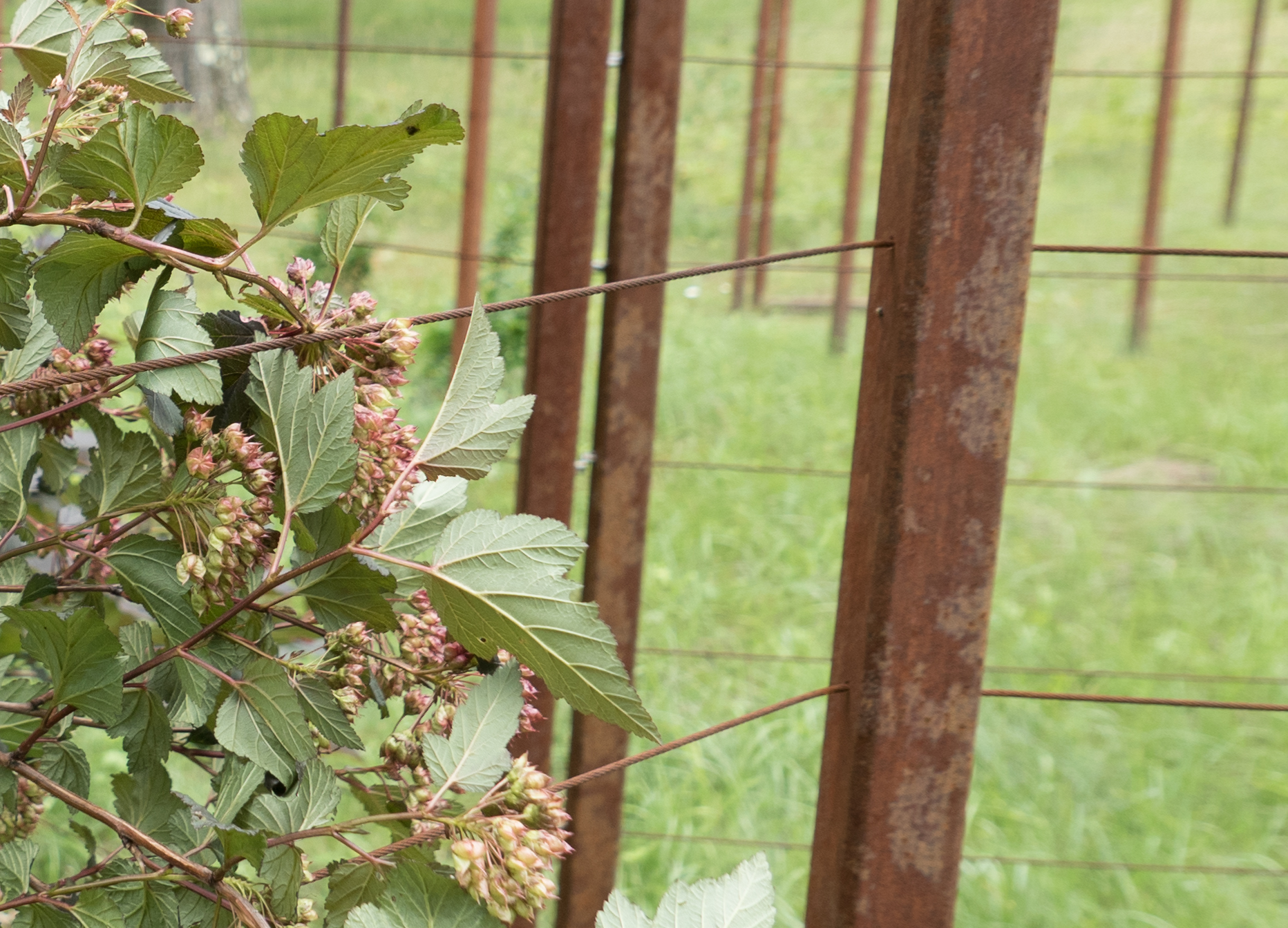
This close-up shows a detail of the fence.
Deciding how to arrange the posts took time. I wanted to plant the shrubs parallel to the road that ran between North Hatley and the neighbouring village of Ste-Catherine-de-Hatley. That meant the back side of the border would be a straight line. But what about the sides and the front? A regular rectangle would look too much like a prison cell, so I discarded that possibility. I didn’t want a half moon coming out from the fence along the road; any curving line simply felt wrong. I laid out sticks on the ground, trying different patterns and finally settled on straight lines that angled in and out, zigging and zagging close to and away from the shrubs.

In the workshop at Glen Villa Art Garden, the can-do-everything guys, Jacques Gosselin and Ken Kelso, drilled holes for the cable six inches apart, a distance we thought would prevent deer sticking their noses through. They erected the steel posts at 8 foot intervals.
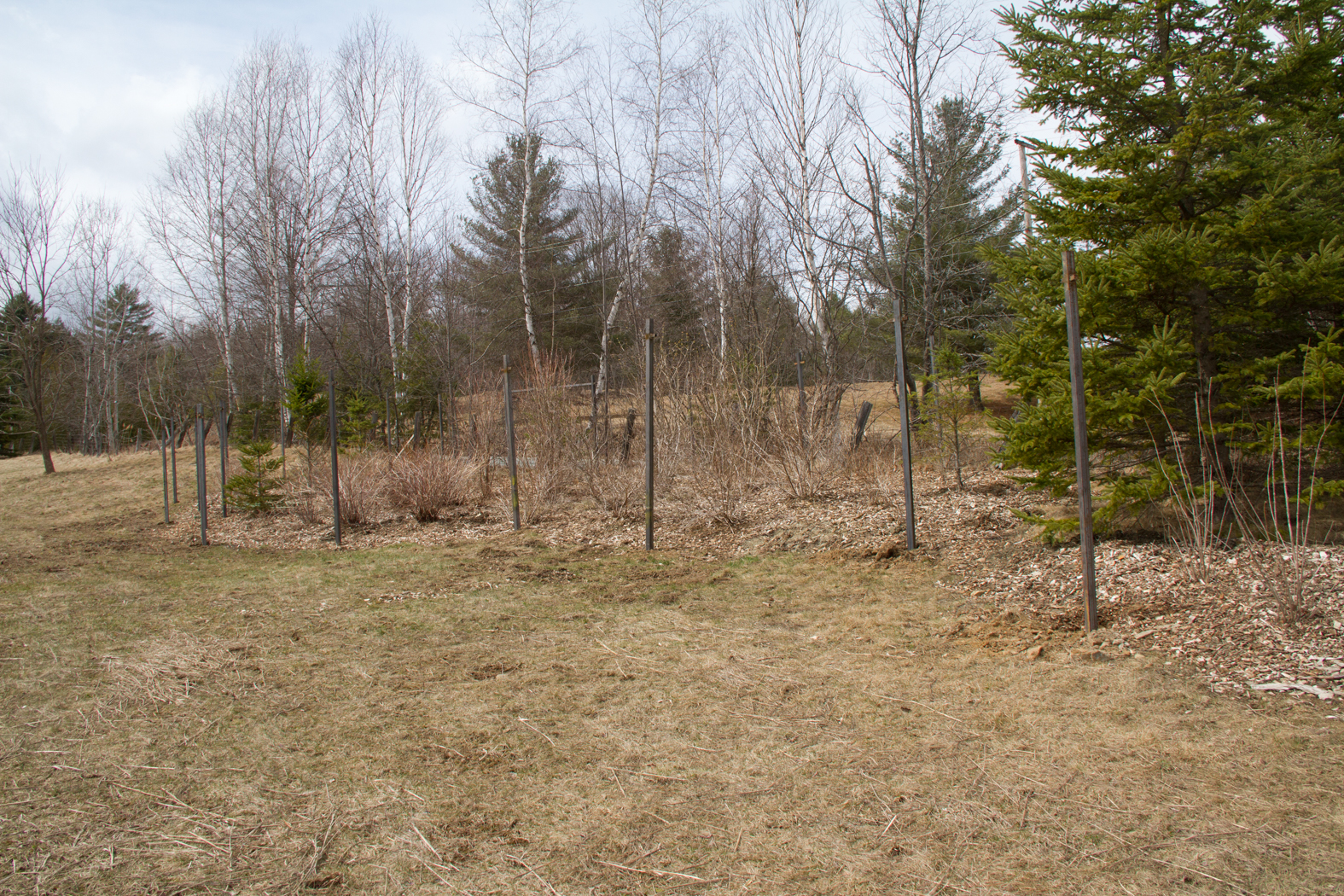
For stability, Jacques suggested using a steel post between the uprights. I agreed, and chose a slightly smaller post so that the fence wouldn’t look top heavy.
The men constructed the fence on site. Getting the posts straight and the cable parallel to the ground took more time than we’d expected. The field slopes downhill fairly sharply and I’d decided that I didn’t want the crosspieces to follow the slope of the land but to remain horizontal. That meant they would have to drop as the fence went downhill.
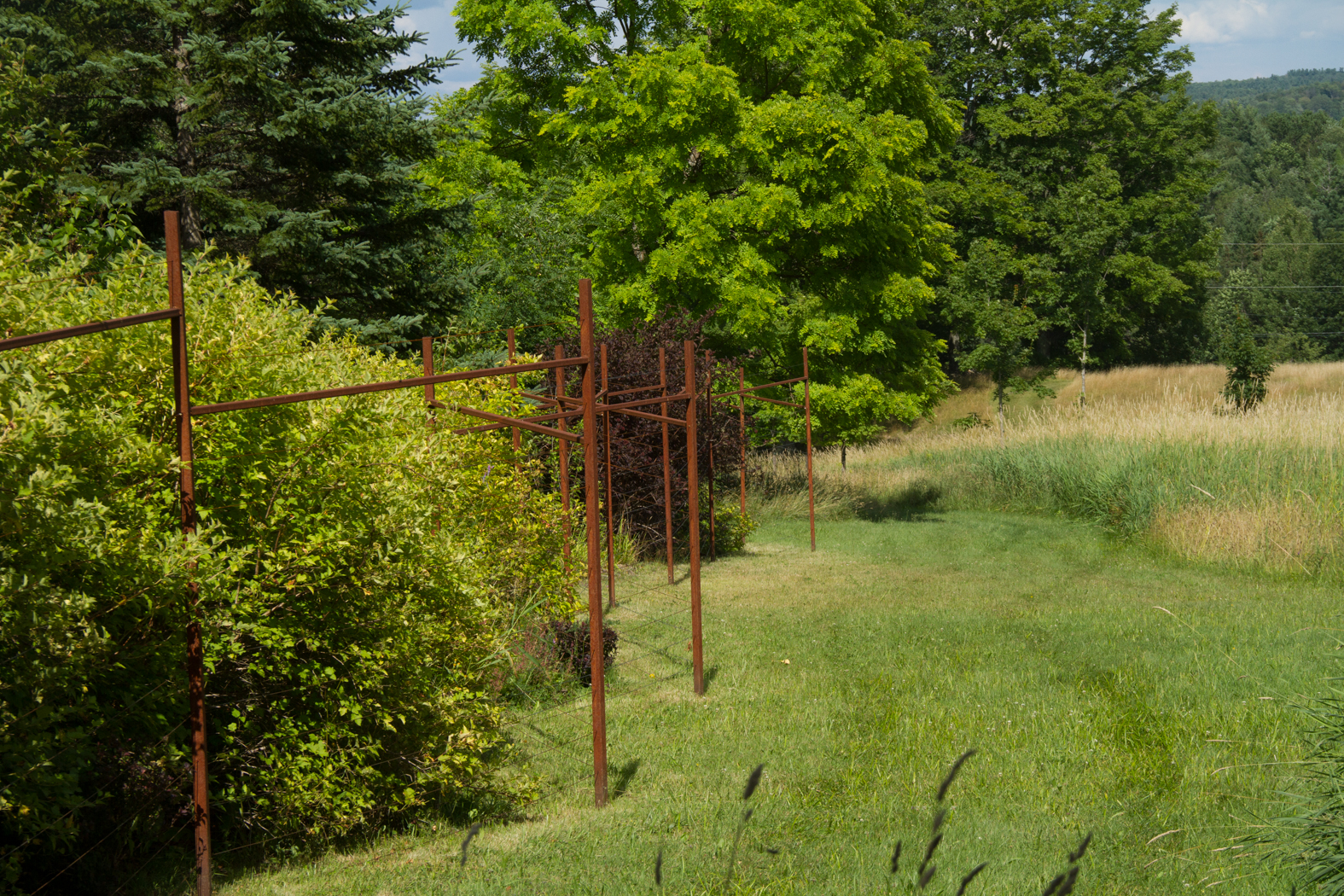
You can see how the fence zigzags and how the crosspieces drop as the fence moves downhill.
I was happy with the results and decided that the design idea would work equally well in another section of the garden, the Asian Meadow. (Why Asian? That’s a long story but to emphasize that character I incorporated various Asian elements: a zig-zag bridge, a stone lantern, flying fish and Chinese tiles set into a fence that divides a picnic area from the meadow itself.)
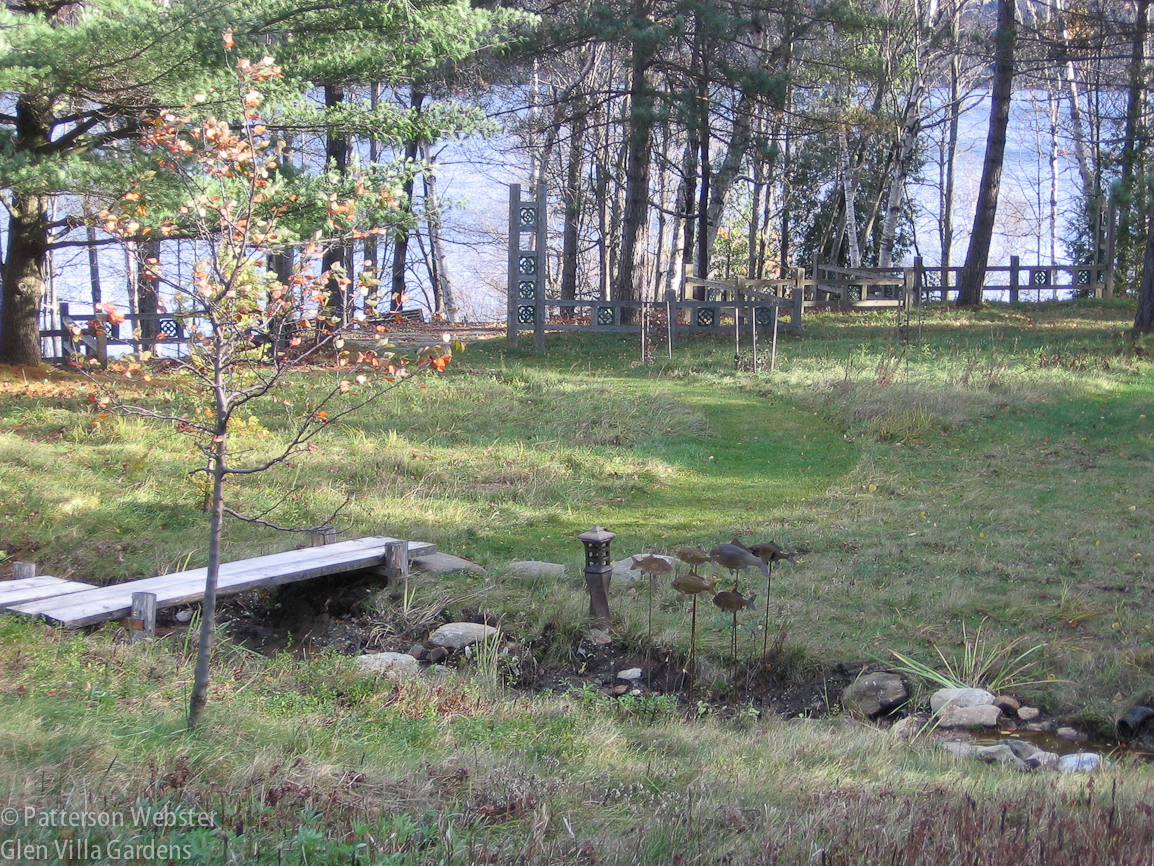
This view of the Asian meadow is from October 2007. Near the fence in the background you can see some temporary fencing put up to protect the first shrubs I planted.
Again, the most difficult decision was how to arrange the steel posts and wire cable. The central medallion on the tiles nearby was a square set on end, and I decided to copy that diamond shape for the fences.
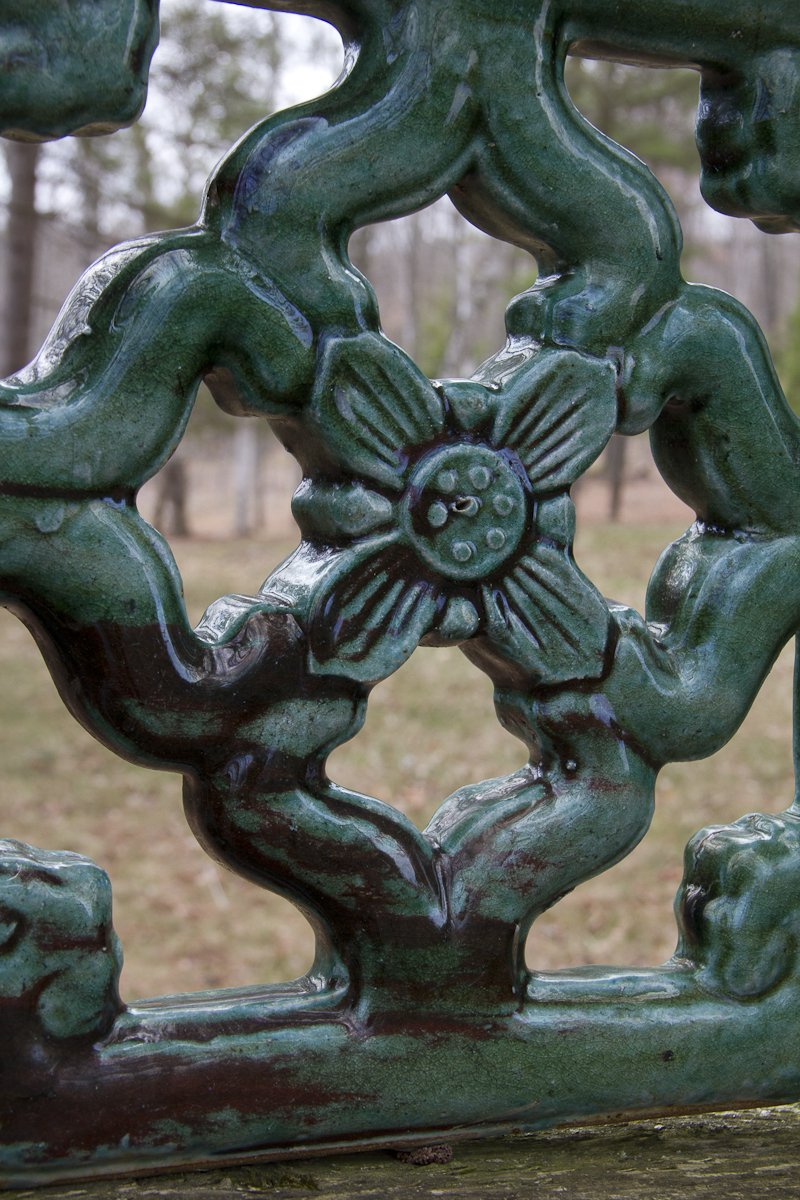
To avoid the prison cell look, I connected the diamond shapes, linking three diamonds in one area, and two diamonds in two others. Each fenced area had a door to allow easy access for maintenance.
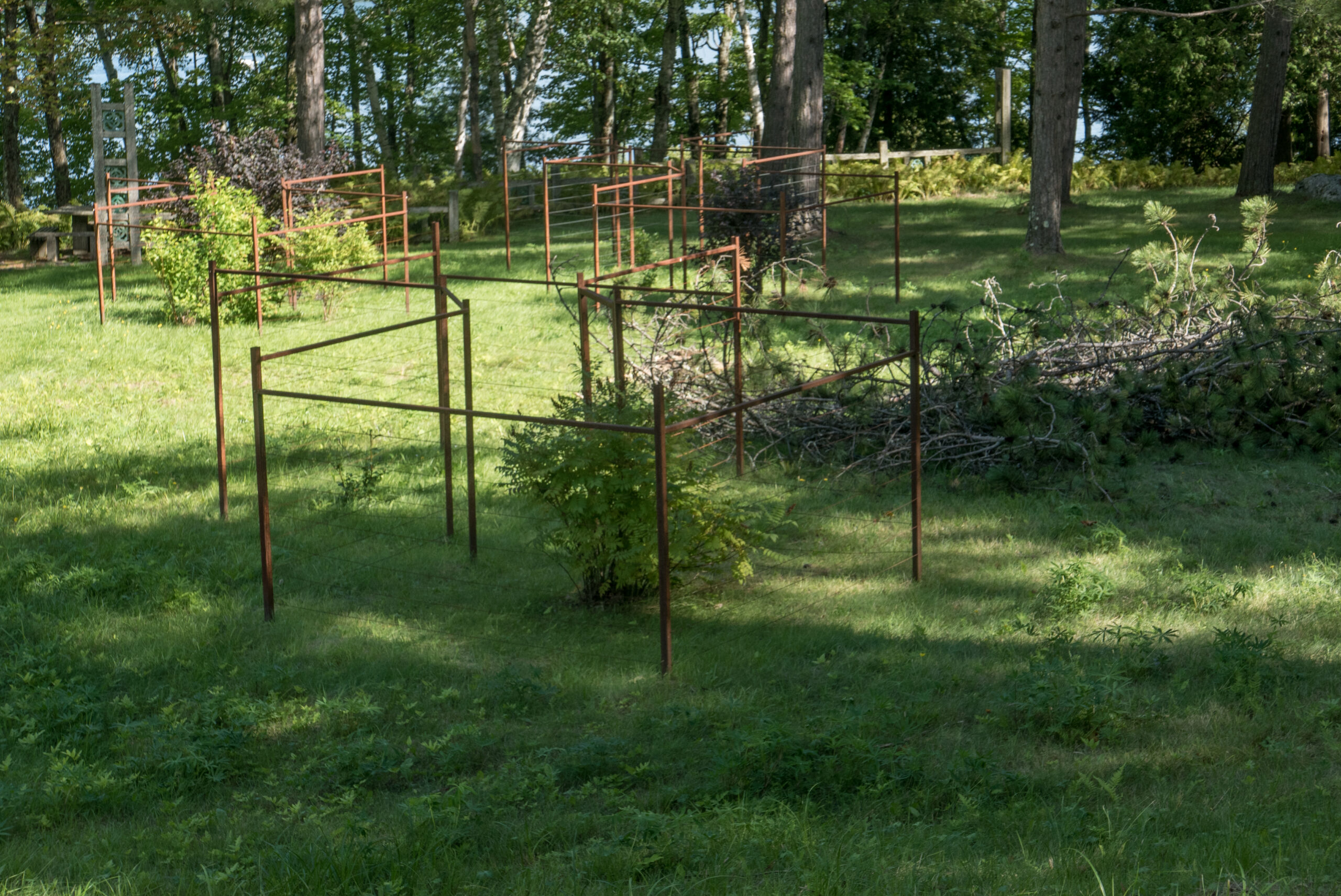
It’s hard to make out the three cages, or fenced areas. It’s hard to ignore the branches on the ground. They were the result of a wind storm.
I’ve used the same design idea in two other areas of the garden. When the shrubs in the first area I fenced began to outgrow the space, I transplanted some into another farm field, in the process unearthing part of an enormous rock that had been partly hidden underground.
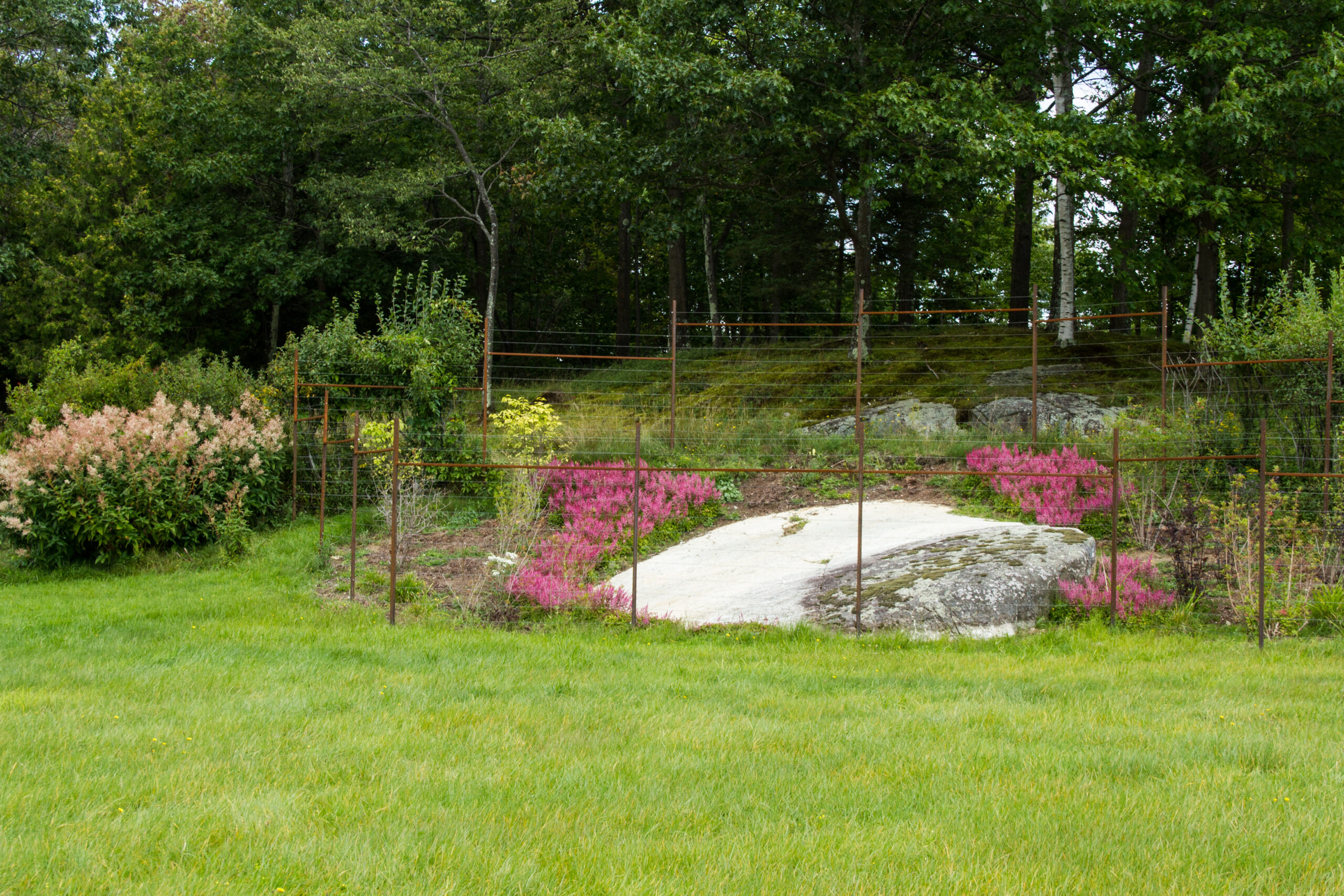
More recently I fenced yet another area, the Upper Room. The fence there acts like a wall, separating the ‘room’ from the woods around it.
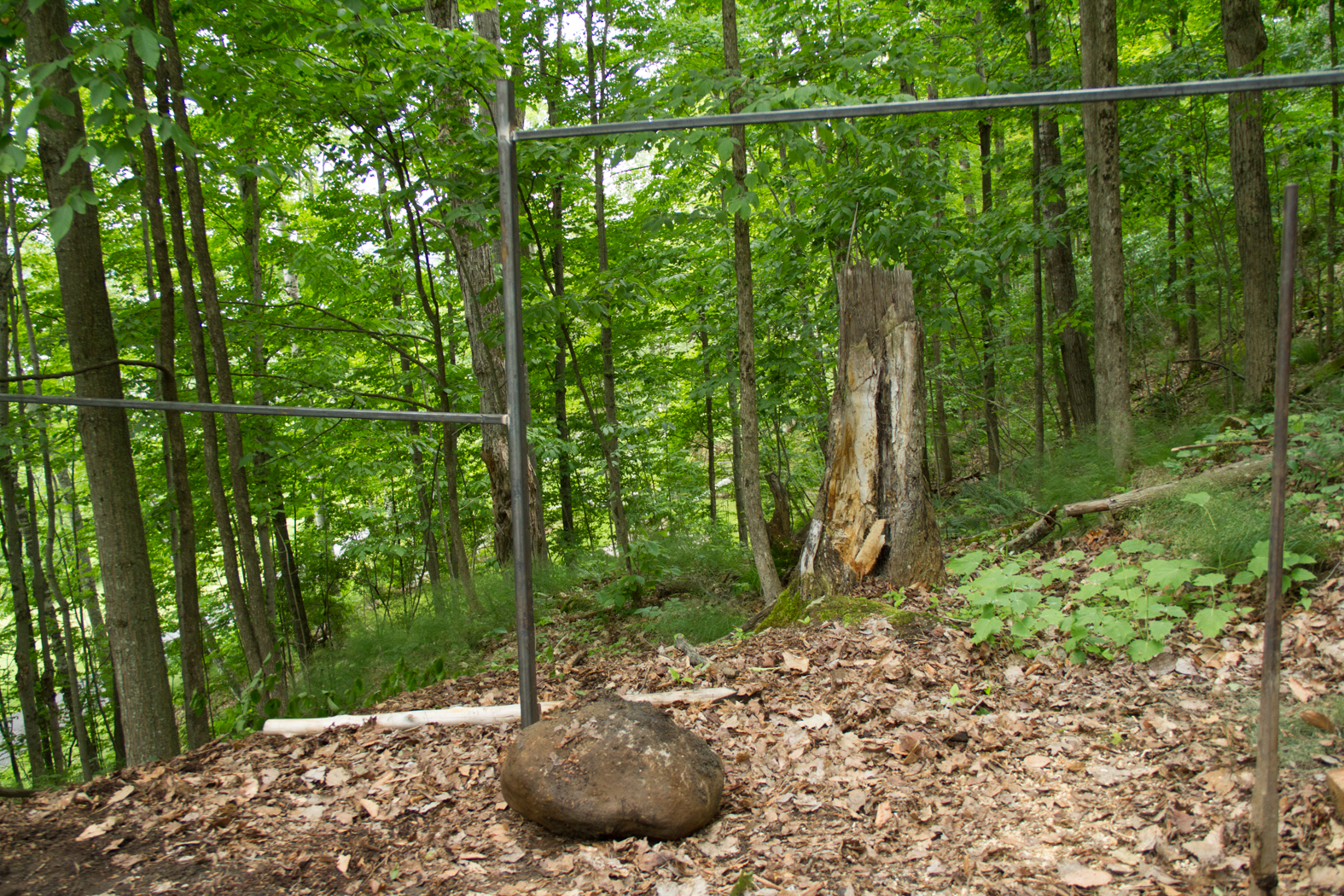
This photo shows the fence in the first stage of construction. The holes in the steel posts were drilled off site, the crosspieces welded to the uprights on site. The last step involves threading the cable through the holes.
I hadn’t intended to fence the Upper Room but I knew I wanted to use yew trees in the four corners of the space, where they would resemble pillars holding up the non-existent roof. Deer like yews so a fence was essential. (Here are links to four entries about this part of the garden: http://glenvillaartgarden.com/the-upper-room/ http://glenvillaartgarden.com/the-upper-room-updated/http://glenvillaartgarden.com/the-upper-room-in-winter/ http://glenvillaartgarden.com/the-upper-room-in-2020/).
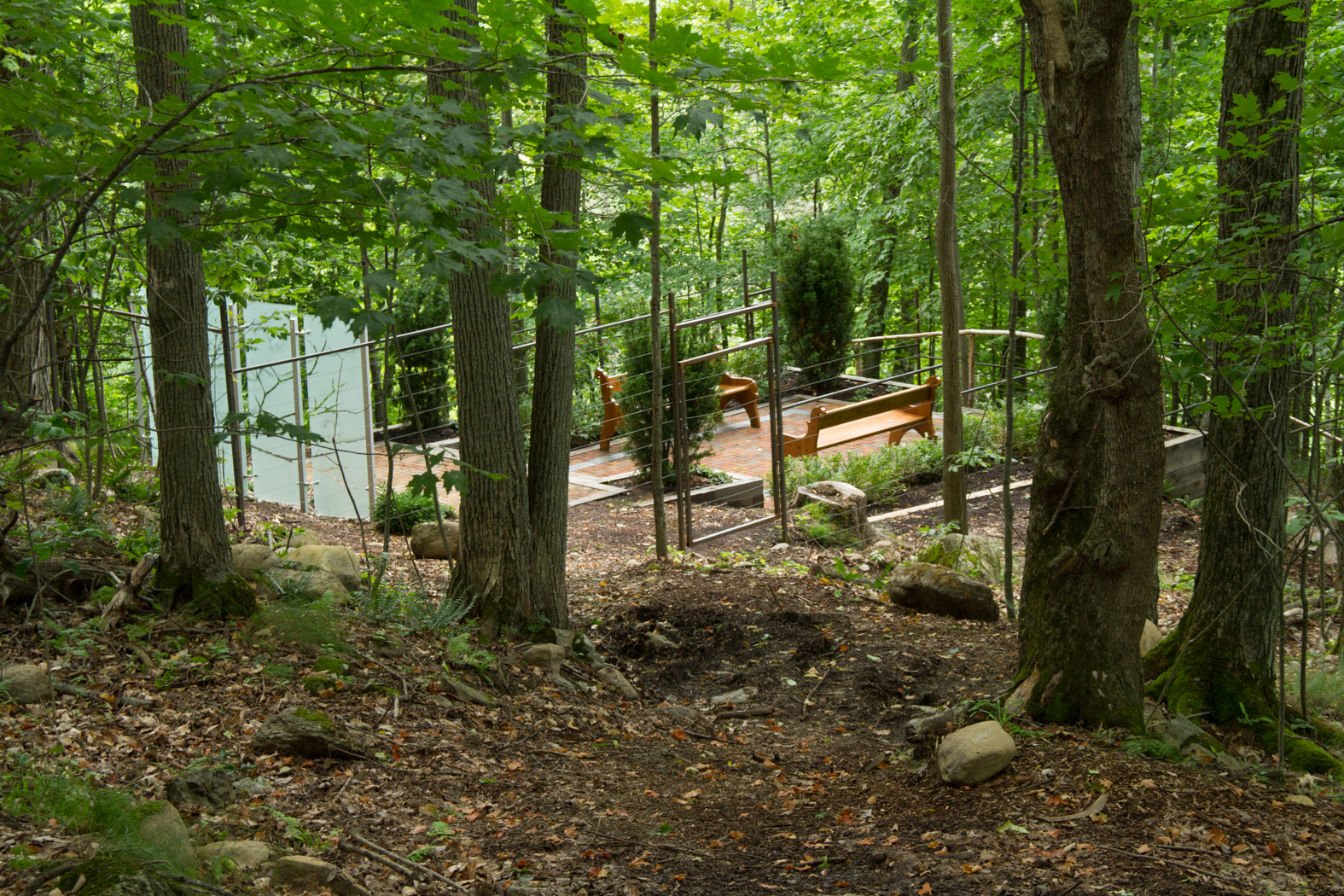
The Upper Room, seen from above.
Unfortunately, the deer squeezed under the bottom cable and chewed the yews to death. Adding one more cable closer to the ground corrected the problem but I chose not to replace the yews, instead adding tall, straight tree trunks. Even the hungriest deer wouldn’t chew them!
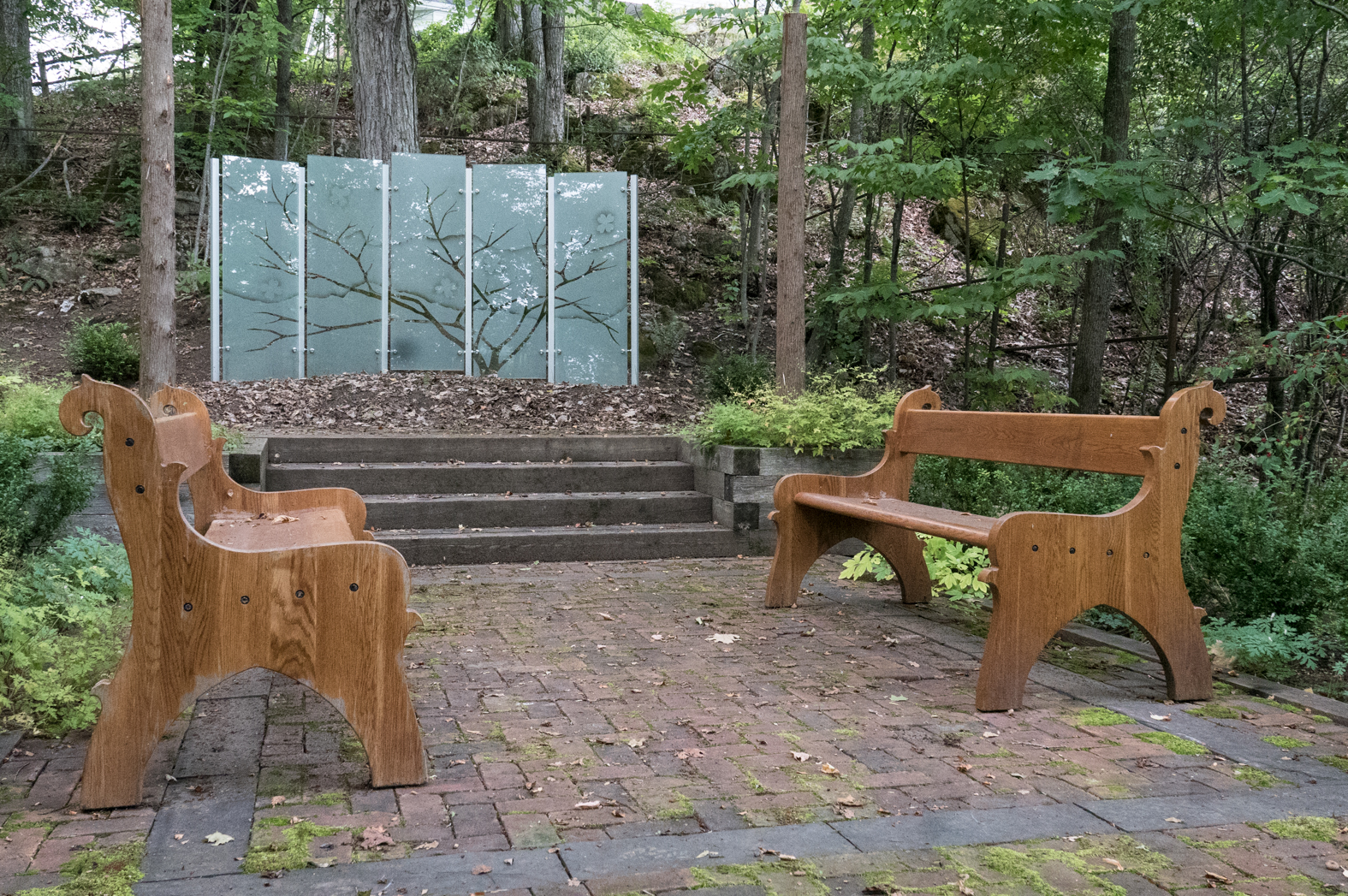
These fences in all four locations have proved their worth. They are strong and durable. They take time to install since the construction has to take place on site but the materials themselves are inexpensive. Best of all, the fences keep the deer out.






Looks great. You have a wonderful team to carry out your vision.
I am very fortunate. Jacques and Ken are wonderful to work with.
Your fences are splendid. A great design solution for an unfortunate challenge.
Thanks, Lisa. They work well and blend into the landscape which is what I wanted to achieve.
It is certainly one of the most effective, discreet and aesthetic solutions I have seen to prevent deer from enjoying our plantations. Well done, another wonderful team effort!
You’re right, it really was a team effort.